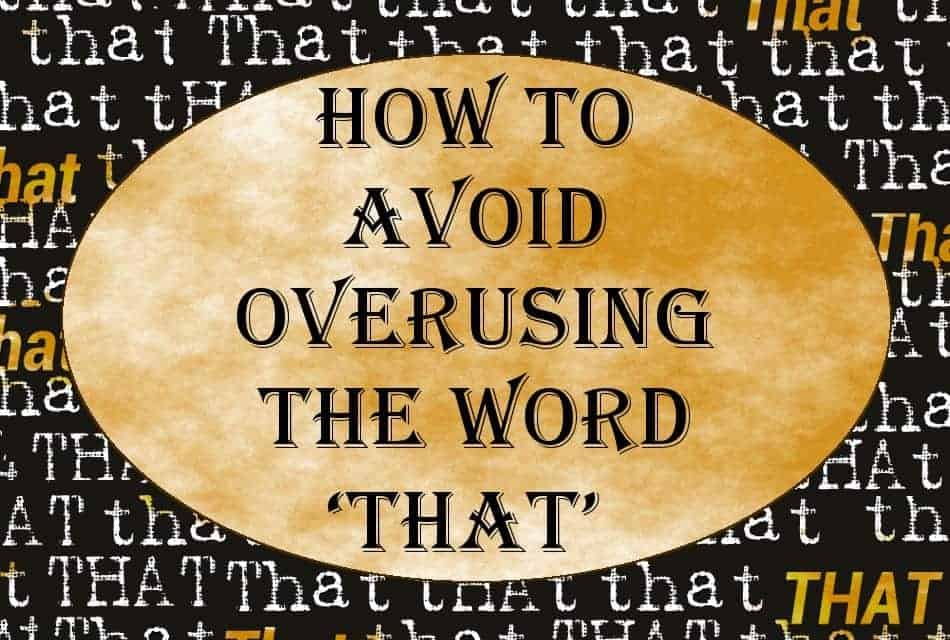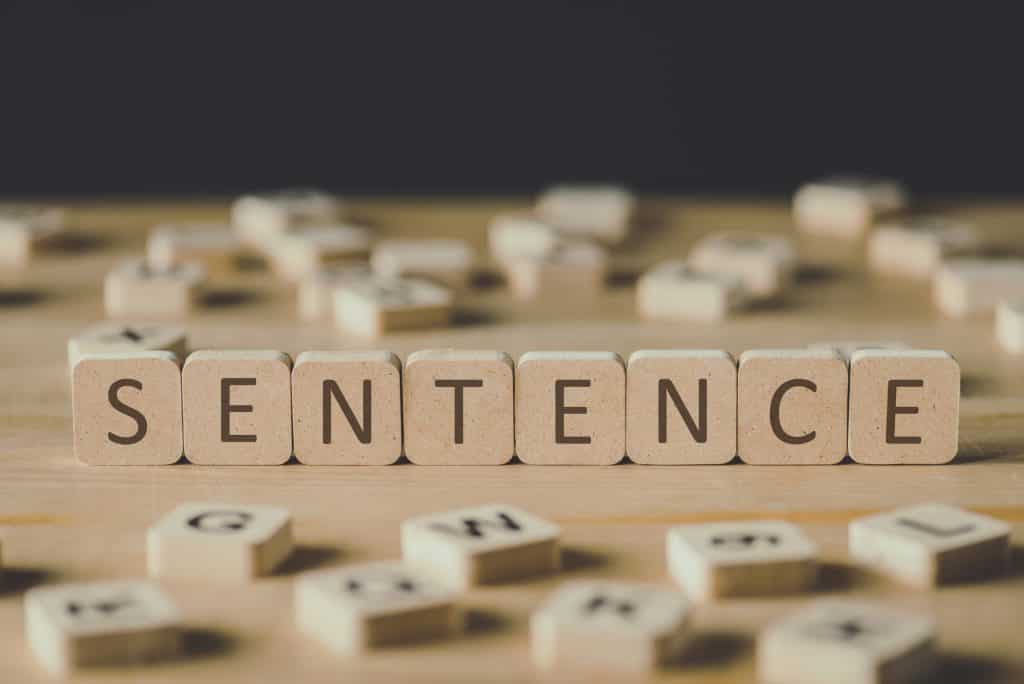Proper Usage of «That» in English
Updated on November 26, 2019
The word ‘that’ is a common word in English that is used in many different ways. Did you notice the use of ‘that’ in the previous sentence? In this case, ‘that’ was used as a relative pronoun as a complement. Often ‘that’ can be used or left out of a sentence entirely. For example, many English students know (that) you can leave out ‘that,’ depending on the instance. This guide to the use of ‘that’ will help you understand when to use the word, as well as when it’s okay to leave it out.
‘That’ as a Determiner
‘That’ is used as a determiner at the beginning of sentences to indicate one object which is far from the speaker. Note that the plural form of ‘that’ as a determiner is ‘those.’ ‘That’ and ‘those’ is generally used with ‘there’ to indicate that the object(s) is not close to the speaker.
Examples
- That’s my friend Tom over there.
- That’s a pencil you have in your hand.
- Those paintings are by Cezanne.
- That is my house on the corner of the street.
‘That’ as a Relative Pronoun
‘That’ can be used as a relative pronoun to connect two clauses. In this case, ‘that’ can also be substituted by ‘who’ or ‘which.’
Examples: That = Which
Tom bought the apples that the man was selling.
OR
Tom bought the apples which the man was selling.
Examples: That = Who
Peter invited the boy that was new in class.
OR
Peter invited the boy who was new in class.
‘That’ in a Clause as an Object
‘That’ can be used in clauses that act as the object of a verb.
Examples
- Jennifer hinted that she would be late for class.
- Doug knew that he needed to hurry up.
- The teacher suggested that we finish our homework.
‘That’ in a Clause as a Complement to a Noun or an Adjective
‘That’ can be used in a clause following a noun or an adjective as a complement. A complement helps give additional information about the noun or adjective. It answers the question ‘why.’
Examples
- Peter is upset that his sister wants to drop out of high school.
- Mr. Johnson appreciates our efforts that have brought in a lot of donations.
- She is certain that her son will be accepted to Harvard.
‘That’ Clause as Subject of a Sentence
‘That’ clauses can introduce a phrase acting as the subject of a sentence. This use of ‘that’ clauses is somewhat formal and is not common in everyday speech.
Examples
- That it is so difficult is hard to understand.
- That Mary feels so sad is very upsetting.
- That our teacher expects us to do two hours of homework every day is crazy!
The Fact That …
Related to the use of ‘that’ clauses as a subject is the more common phrase «The fact that…» to introduce a sentence. While both forms are correct, it is much more common to begin a sentence with the phrase «The fact that….»
Examples
- The fact that he wants to see you should make you happy.
- The fact that unemployment is still high proves what a difficult economy this is.
- The fact that Tom passed the test shows how much he has improved.
Compound Conjunctions with ‘That’
There are a number of compound conjunctions (words that connect) with ‘that.’ These expressions tend to be used in formal English and include:
«in order that,» «so that,» «providing that,» «in case that,» «now that,» «given that»
Examples
- He purchased the computer so that he might improve his typing.
- Susan told him she would marry him providing that he found a job.
- Alice feels happy now that she has moved into a new home.
After Reporting Verbs
‘That’ can be dropped after reporting verbs such as say (that), tell someone (that), regret (that), imply (that), etc.
Examples
- Jennifer said (that) she was in a hurry.
- Jack told me (that) he wanted to move to New York.
- The boss implied (that) the company was doing very well.
After Adjectives
Some adjectives can be followed by ‘that’ when answering the question ‘why.’ ‘That’ can be dropped after the adjective.
- I’m happy (that) you found a new job.
- She’s sad (that) he’s going to move to New York.
- Jack is anxious (that) he didn’t pass the test.
As Object in Relative Clauses
It’s common to drop ‘that’ when it is the object of the relative clause it introduces.
- He invited the boy (that) he met on the train.
- Shelly purchased the chair (that) she had seen at the auction.
- Alfred wants to read the book (that) Jane recommended.
I am adding to what StoneyB said in answer to the question, «When can I remove the word “that” in a sentence?» I was asking the same question myself, about when to or not to use «that.» The sentences I was unsure of using were «I am sorry that I did not call you,» or «I am sorry I did not call you.»
While reading StoneyB’s response, I was having a hard time absorbing to «parts of speech» terminology. I never did well with that in high school — my solution was to verbalize the sentence in my mind and if it sounded correct, I went with it! This method may work okay for those who have heard and spoken Americanized English for a long time, but is not the best advice for the English Language Learner.
All I have done is to add some of my own personal examples and maybe clarify the parts of speech that StoneyB discussed in his post. I stand to be corrected by anyone, please.
Knowing when or when not to use the word «that» in a sentence when you feel that you use it too often:
Example 1 — «that» — relative pronoun:
«It’s the same meatloaf that (used as a relative pronoun) we had yesterday.»
You can leave out the «that» in the sentence above because «it acts as the direct object of the verb in the relative clause» (StoneyB, 2014).
Direct object of the verb? — Leave it out.
«It’s the same meatloaf we had yesterday.» — Correct.
However, if it is used as the »subject of the verb in the relative clause» (StoneyB, 2014), you could not leave it out:
«It’s the same meatloaf that (subject) won (verb) in the cook-off.»
Subject of the verb? — Leave it in.
«It’s the same meatloaf ___ won in the cook-off.» — Not correct.
Example 2 — «that» — subordinating conjunction:
«I am sorry that (used as a subordinator) I did not call you.»
That appears in front of the subordinate clause and behind the verb (am), in the main clause.
«I am sorry I did not call you.»
Both uses are fine.
Example 3 — «that» — subject of the sentence:
If «that» is the subject of the sentence, it cannot be left out:
«That I am inconsiderate is a matter to be discussed later.» — Correct.
Example 4 — «that» — conjunction which does not appear and is not spoken close to the main verb in the sentence:
When the verb in the main clause is separated from the subordinate clause by a lot of other words, such as those used as part of an adverbial phrase, the that must remain for clarity in writing. In spoken English, it may be okay to leave it out, but it sounds a bit lazy to me.
Formal writing: «I am sorry in so, so, very many ways that (still used as a conjunction) I did not call you.» — Correct.
Spoken English: «I am sorry in so, so, very many ways I did not call you.» — Okay, but awkward.
Example 5 — «that» — predicative complement used with a verb:
Without the predicative complement, the sentence would not tell us much — for example, «Many folks thought,» does not stand well on its own, giving very little information about what was thought.
«Many folks thought that my meatloaf was better.» — Correct.
«Many folks thought my meatloaf was better.» — Okay in speech, but not so good in writing.
Sources:
English Language Learners Stack Exchange, (2014). When can I remove the word «that» in a sentence? — asked by T2E on May 26, 2013. Answered by StoneyB on May 27, 2013, edited March 7, 2014.
Englishpage, (2015). Forum thread: English Language Questions: Predicative Complement. Asked by Camilus, Member, April 17, 2004. Answered by Pete, Super Moderator, April 19, 2004.
http://www.englishpage.net/showthread.php?655-Predicative-Complement
Continue Learning about English Language Arts
Can you end a sentence with the word then?
no u cannot end a sentence with the word then.
Both the question, and the above answer, end with the word
then…
Can you end a sentence with the word at?
A sentence can end with the word at,such as:Who are you looking at? Where is your head at?
Can you end a sentence with the word became?
a sentence with became
Can you end a sentence with the word also?
Yes.
«Either» is used at the end if the sentence is negative.
Can you end a sentence with the word of?
Not many sentences do, but you can try!
Hint: You can end a sentence with the words ‘heard of’
For a few years during elementary school, virtually every sentence my friends and I uttered included the word “like.” This awful speech habit led to plenty of well-deserved ridicule, which made me determined to stop overusing unnecessary words. I thought I was succeeding on this front for years, until I started doing freelance writing assignments for a client who wasn’t a fan of superfluous words, including “that.” Then, I learned just how guilty I was of overusing the word “that” in my writing. It was basically my new, written version of “like.”
While phasing out “like” was pretty simple, removing unnecessary uses of “that” from my writing proved challenging because this word legitimately belongs in many sentences. To help you avoid similar grief, today I’d like to share a few tips for avoiding overusing “that” and using “that” in a sentence correctly.
When to Use ‘That’ in a Sentence
First, it’s important to know when “that” is really needed in a sentence. This word frequently attaches dependent clauses to independent clauses, and it is strictly necessary if a clause begins with certain subordinating conjunctions, such as before, while and in addition to. “That” also should be used before clauses that clarify a noun.
- She said that although the sunrise workout sounded like a brilliant idea, sleeping in also sounded good.
- The notion that their project would be finished by the original deadline was laughable.
“That” additionally should appear after certain verbs, such as contend, estimate and point out. If you’re a native speaker, you can probably intuitively identify many of these verbs.
- He enthusiastically declared that he would stop procrastinating tomorrow.
You also should use “that” if a sentence would sound awkward without it. If you’re in doubt, include it, since this does less harm than incorrectly omitting it.
When to Leave Out ‘That’
To decide whether you can omit “that” from a sentence, check how naturally and intelligibly the sentence reads without it. Usually, you can drop “that” if it follows a verb that essentially means “to say.” This omission mimics natural speech and shouldn’t change the meaning of the sentence.
- The children claimed an ice cream break would help them study more effectively.
- She insisted she wasn’t responsible for the houseplant’s untimely death.
However, it’s usually better to keep “that” if other words fall between the verb and the dependent clause.
- The kids also said this morning that a television break would enhance their studying.
- She admitted begrudgingly that she might have contributed to the plant’s demise.
You also can usually omit “that” if it precedes a simple relative clause.
- Neither of them was particularly excited about the compromise (that) they reached.
Using ‘That’ Twice in a Row
When you’re trimming unnecessary uses of “that” from your writing, be sure to pay attention to sentences where it appears multiple times or even twice in a row (“that that”). These sentences can be grammatically correct but stylistically undesirable. For example, at BKA, we use Associated Press Style, which requires sentences to be constructed in a manner that eliminates consecutive uses of “that.”
- He confessed that that plan had been formulated on three hours of sleep.
- He confessed that they had only slept three hours when they formulated that plan.
Even if you’re not following a strict style guide, it’s often beneficial to try revising sentences to avoid using “that” too redundantly.
Using ‘That’ or ‘Which’
It can be tempting to cut back on “that” by replacing it with “which,” but these words aren’t actually interchangeable. “That” introduces information that is integral to the meaning of a sentence, while “which” precedes information that is non-essential and offset by commas.
- The first kindergarten class that all 31 students attended was miraculously free of mishaps.
- The first kindergarten class, which all 31 students attended, was miraculously free of mishaps.
In this example, each sentence has a distinct meaning. The first describes a specific class when all 31 students were present for the first time, while in the second, the attendance of all 31 kids is a non-essential detail.
Got All That?
Striking the right balance between overusing the word “that” and omitting it improperly takes a little thought, but with practice, it should become second nature. What other common words do people overuse? Tell us about it in the comments section! If you’re looking for help on grammar rules, check out some of our other GrammarSpot posts.
By Robby
If you are new here please read this first.
Do you ever think English grammar is just trying to confuse you? If you’re trying to learn English, all the grammatical rules and exceptions can be overwhelming. Heck, even as a native English speaker, I often feel like English was designed specifically to be as complicated as possible! For example, why is it that both of the following sentences are great…
The dog that Mary is petting is very fluffy.
The dog Mary is petting is very fluffy.
…but only the first of the following two sentences is acceptable?
The dog that has brown fur is very fluffy. (This is fine!)
The dog has brown fur is very fluffy. (This is bad!)
In this article, I’ll be talking to you about sentences in which you can (and can’t) omit relative clauses, such as who, that, or which.
These are called contact clauses, because they consist of two clauses that are right next to each other, and therefore they come into contact with each other. By the end of this article, the sentences above will be confusing no more – and you’ll be forming contact clauses of your own ❗
Let’s start with something familiar: the relative clause. In English, we use relative clauses to provide additional information about something without starting an entirely new sentence. For example, rather than saying this…
John is my friend. He is wearing jeans.
…we can use a relative clause, and instead say this:
John is my friend who is wearing jeans.
As the above examples show you, relative clauses function as adjectives: they tell you some information about what John is wearing. All relative clauses start with relative pronouns, such as “that”, “which”, “who”. Here’s some more examples of relative clauses with each type of pronoun:
I drive a car that was made in Germany.
English is a language which has a very complicated grammar.
The teacher who taught me English knows thousands of words.
Make sense? Great – now that you’ve got an excellent idea of how relative clauses work, you’re well on your way to figuring out when you can omit relative pronouns.
Subjects and objects
Relative pronouns can be either subjects or objects. However, subject and object relative pronouns look exactly the same, so you need to be a grammar detective to figure out which ones are subjects and which ones are objects. Luckily, I’ve got some tips that makes it easy to find out which is which.
Subject pronouns: If a verb comes right after a relative pronoun, then the relative pronoun is a subject. Let’s take a look at an example:
The woman who rode the subway was very pretty.
As you can see, the verb “rode” comes right after the relative pronoun “who” – and therefore, we know that the relative pronoun is a subject.
Object pronouns: If, on the other hand, there isn’t a verb directly after the relative pronoun, then we know that the relative pronoun is an object. Let’s check out an example of this:
The woman whom John saw on the subway was very pretty.
Here, the relative pronoun “whom” is followed by the proper noun “John”, and therefore we know that it is an object.
Contact clauses
So we’ve mastered the relative clause and the distinction between subject and object pronouns. What, you ask, does this have to do with omitting “that”, “which,” and “who”?
Believe it or not, I’ve just given you all the information you need to know about omitting relative pronouns from sentences. Let’s return to our first example about the fluffy dogs:
The dog that Mary is petting is very fluffy.
The dog Mary is petting is very fluffy.
Do you notice anything about these sentences? Indeed – in this sentence, the relative pronoun “that” is an object. Note that here, you can omit the relative pronoun!
Now, let’s again revisit the fluffy dog in a different sentence:
The dog that has brown fur is very fluffy.
Aha! Here, the relative pronoun “that” is a subject, because there is a verb right next to it. And not that here, you cannot omit the relative pronoun.
Now do you understand why sometimes you can omit the relative pronoun and make a contact clause, but sometimes you can’t? It’s all about subjects and objects. When the relative pronoun acts as an object, you can omit it, and create a contact clause. But when the relative pronoun acts as a subject, you absolutely cannot omit it – no exceptions ❗
Quickly solving the problem
Right now, you might be thinking, “This makes sense . . . but how can I possibly do it quickly enough?” Indeed, it seems like a lot of work to identify a relative clause, see if the pronoun is a subject or an object, and then decide if you can omit it. Luckily, there are a couple ways to do this quickly and accurately.
First, just focus on the verb, not the pronoun!
If there’s a verb immediately after the relative pronoun, you know it’s a subject, and you can’t omit the relative pronoun. If there’s no verb, you’re good to go – you can create a contact clause!
For example:
The water that splashed my face was very cold. (Verb after relative pronoun = you can’t omit the relative pronoun!)
The water that I drank was very cold. (No verb after relative pronoun = omit the relative pronoun as you please!)
The water I drank was very cold.
Second, practice makes perfect. Constantly rehearse and perfect your English, and you’ll internalize all of its complicated rules in no time. Take advantage of the free resources on the Internet so you can practice every day, even if it’s just for a little bit.
Now you’re ready!
Now you know all there is to know about contact clauses, and when you can or can’t omit relative pronouns like “who”, “which”, or “that”. Practice what you’ve learned by listening to native speakers — you’ll be astonished by how frequently you hear contact clauses in casual conversation!
Paul writes for Language Trainers, which provides individually-tailored language training on a one-on-one or small group basis worldwide. The English Accent Game is a free educational tool that Language Trainers provides; you can find that and other free resources on their website, or email Paul at [email protected] for more information.
P.S. Are you serious about your spoken English improvement? Check out the English Harmony System HERE!








